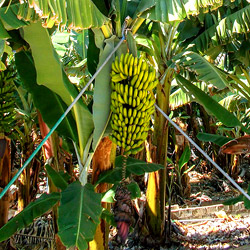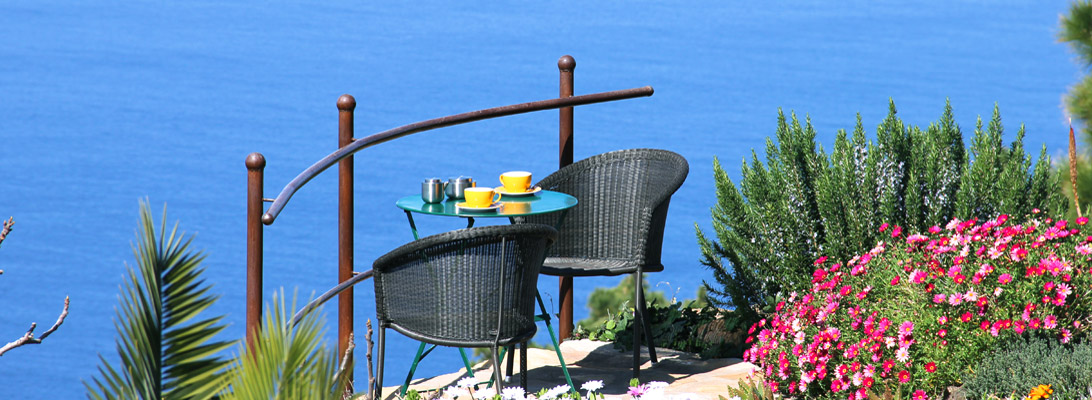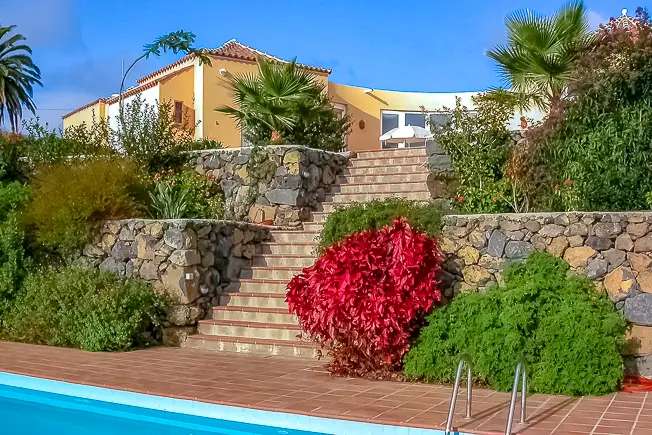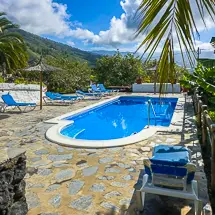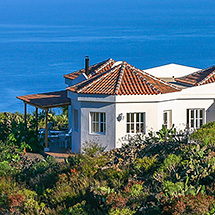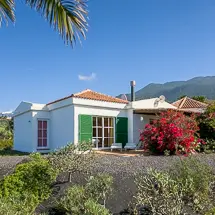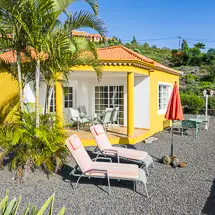The British were the first to introduce the cultivation of bananas on La Palma in the Los Sauces valley in 1896. In the meantime, more than 100,000 tons of bananas are still produced per year on about 3,000 hectares. Almost every usable area below 400 or 300 meters up to the coast is used for banana plantations. Small fincas with an area of less than 5,000 square meters stand next to the large plantation fields around Tazacorte, Los Llanos, San Andres y Sauces and Puerto Naos.
Banana Growth and Harvest Time
Each banana plant has its own flowering season, so harvesting is all year round. In 6 months, one flower produces up to 50 kg heavy, man-high fruit stands with 150 to 300 individual fruits. The perennials are picked green as a whole and often first stored on the roadside before they are transported away, sorted into "hands" at the packing station, washed, chemically treated again and packed. After about 10 years a banana rootstock is leached out and has to be replaced by a new one.
Expensive Production
The small tasty "Dwarf Cavendish" bananas are exported to mainland Spain, Italy and France. The palmeric banana is more expensive to produce than its Caribbean sisters: it costs about 1 € per kilo of fruit harvested. A third of the costs are for irrigation (not necessary in the humid Caribbean), and the wage costs are also higher than in Central America. No heavy equipment can be used on the narrow terraces, so the banana industry is labor-intensive and dependent on (more expensive) small machines.
No beauty
Windbreaks, plastic tarpaulins, irrigation basins, and above-ground water pipes do not flatter the eye of the tourist seeking relaxation. However, banana cultivation on La Palma is still considered the only profitable economic sector alongside tourism. Despite all the criticism, especially from aesthetes and environmentalists, banana cultivation is still being held on to.
Banana Farming Pollutes the Soil
Banana farming pollutes the soil One point of criticism is that the soil is leached out by monoculture and has to be treated with artificial fertilizer. Another is the overloading of the water balance in La Palma: 1,000 liters of water are needed for 1 kg of bananas until harvest.
Toxins in Banana Cultivation
Many plantation workers complain about health impairments caused by the pesticides used. Instead of petroleum with soap from earlier days, chlorinated hydrocarbons and organic phosphorus compounds are now used. Synthetic fungicides are used against fungal attack in the soil and chlorophosphorous compounds against worms. This poison cocktail leaves soils without life and also hits lizards, which are under species protection.
Alternative Cultivation Methods
Researchers from the University of La Laguna (Tenerife) have developed plant-based products and "biological" plant protection methods (breeding of natural enemies of plant pests). Foreign organic farmers, including many from Germany, have been using organic farming methods for some time: about 500 hectares are currently farmed organically in the Canary Islands. The product names "organically grown" or "alternatively produced" are protected by law.







